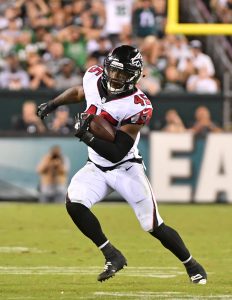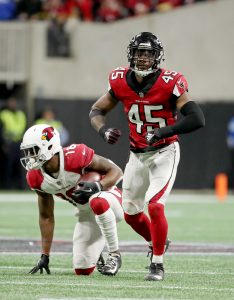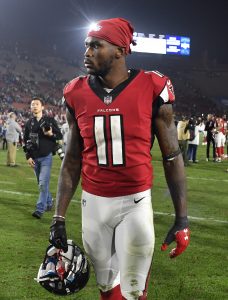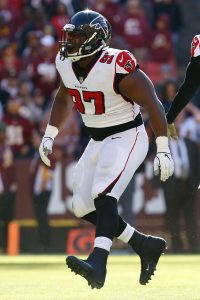For the second time this year, the Falcons turned to Deion Jones‘ contract to create cap space. Atlanta completed its latest Jones restructure Thursday, per Field Yates of ESPN.com (on Twitter).
 This latest adjustment will give the Falcons an additional $2.8MM in cap space. The Falcons’ March Jones restructure generated an extra $4MM in room. Atlanta entered Thursday barely $500K under the cap, slotting in above only the Rams for space.
This latest adjustment will give the Falcons an additional $2.8MM in cap space. The Falcons’ March Jones restructure generated an extra $4MM in room. Atlanta entered Thursday barely $500K under the cap, slotting in above only the Rams for space.
The Falcons have Jones locked up through 2023 on a four-year, $57MM extension — one authorized by their previous regime. The new Atlanta front office has gone to the restructure well a few times this year. Matt Ryan‘s fourth restructure — a move new GM Terry Fontenot was initially against — headlined this batch of reworkings. Atlanta created more cap space in June by dealing future Hall of Famer Julio Jones to Tennessee.
Prior to Thursday’s restructure, Jones’ cap numbers were set to balloon after this season. The standout linebacker was set to count $18.6MM against Atlanta’s 2022 cap and comprise $17.1MM of the Falcons’ cap in 2023. His 2021 cap hit checks in below the $10MM mark. Thursday’s move will push more money onto future Falcons caps.





